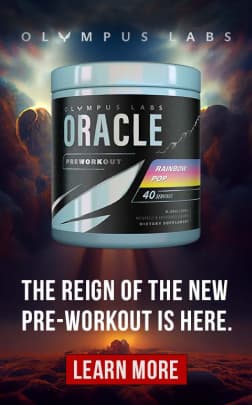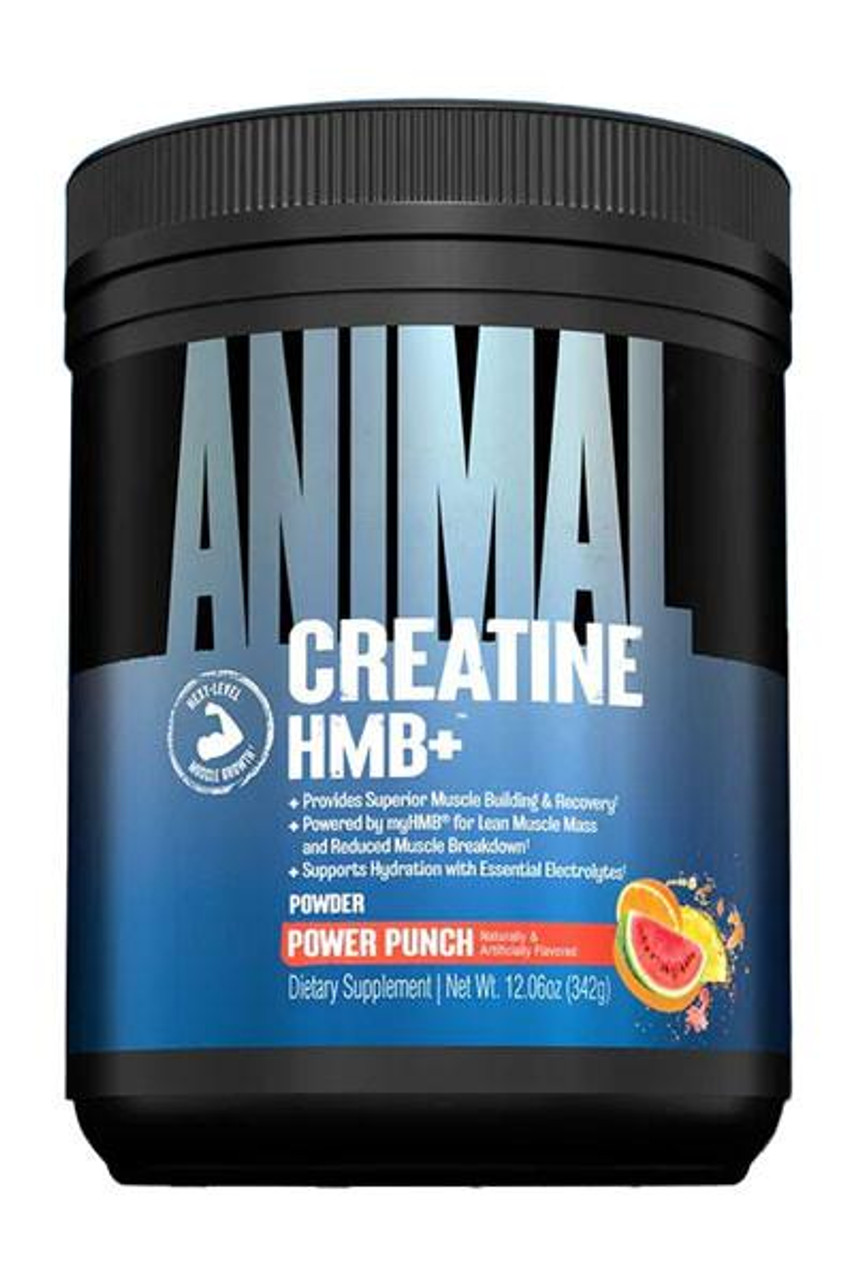German Volume Training: Build Strength & Size Like a Pro
Posted by Leonard Shemtob on Aug 13, 2025
German Volume Training (GVT) is a popular workout method known for its high volume and muscle-building results. It’s often called the 10x10 workout because you perform 10 sets of 10 reps for each exercise. This training style focuses on pushing your muscles to handle a large workload, which can lead to noticeable gains in strength and size.
This challenging program has been used by powerlifters and bodybuilders for decades to break through plateaus and achieve massive gains. In this guide, we'll break down what GVT is, its unique benefits, and give you a complete plan to get started.
[Related] Pyramid Training: The Ultimate Guide To Progressive Overload Success
Quick Summary
- What is German Volume Training? A workout method involving ten sets of ten reps to build muscle quickly.
- How GVT Works: Designed to maximize muscle stress and growth through high-volume training.
- Benefits of GVT: Effective for increasing muscle size, strength, and workout intensity.
- Main Goal: Build muscle mass and strength by increasing total training volume.
- Who Should Try GVT: Ideal for intermediate to expert lifters looking for muscle growth challenges.
- Best Supplement for GVT: Anafuse is designed to naturally support muscle mass, strength, and recovery, making it a helpful addition to German Volume Training.
What is German Volume Training?
German Volume Training, or GVT for short, is a workout method designed to help you build muscle quickly. It was first created in Germany in the 1970s and is also known as the "10x10 workout" because it involves doing 10 sets of 10 repetitions for a single exercise.
The idea behind GVT is to use a moderate weight — about 60% of what you can lift one time — and do many repetitions and sets with short breaks in between. This high volume of work causes your muscles to work very hard and grow bigger and stronger over time.
GVT can be performed 3 to 5 days per week depending on recovery, with each session focusing on different muscle groups. The workload in each session is high, but it’s effective for breaking plateaus and boosting strength quickly.
The Key Elements of GVT
To successfully perform German Volume Training, you need to understand the specific rules that make the program so effective. These elements work together to create the intense stimulus required for significant muscle growth.
- High Volume: The core of GVT is doing 10 sets of 10 reps for each exercise. This means you repeat the same exercise 100 times in total, which puts a lot of stress on your muscles to encourage growth.
- Moderate Weight: You use about 60% of the maximum weight you can lift one time (called your one-rep max). This weight is light enough to complete all 10 sets but heavy enough to challenge your muscles.
- Compound Movements: Most exercises in GVT workouts focus on big, multi-joint movements like squats, bench presses, and deadlifts. These compound lifts work multiple muscles at once, making your workout more efficient.
- Short Rest Periods: Limit your rest time to 60-90 seconds between sets. This helps keep your muscles under tension and increases workout intensity.
- Tempo: The speed at which you lift and lower the weight, known as the tempo, is often overlooked but is a key element of GVT. A common tempo is 4-0-2-0. This means you lower the weight for four seconds, have no pause at the bottom, lift the weight for two seconds, and have no pause at the top.
- Training Frequency and Split: GVT typically follows a split routine done 3 to 4 times per week, with each workout focusing on major muscle groups to allow proper recovery.
- Progressive Overload: To keep improving, you gradually increase the weight you lift over weeks, even if only by a small amount.
How Does German Volume Training Work?
German Volume Training (GVT) works primarily through applying a very high volume of work to your muscles, using a structured approach of 10 sets of 10 repetitions with moderate weights (about 60% of your one-rep max). This intense training method triggers muscle growth through three main scientific mechanisms:
1. Mechanical Tension
During GVT, the muscles experience sustained tension from lifting moderate weights repetitively. This mechanical tension signals the muscle fibers to grow stronger and bigger. The moderate load allows completion of all 10 sets while maintaining good form, which is essential for maximizing muscle adaptation.
2. Metabolic Stress
GVT uses short rest periods (typically 60 to 90 seconds), which causes the muscles to accumulate metabolic byproducts like lactate. This metabolite build-up leads to a phenomenon known as "the pump" and triggers anabolic hormone release, both of which stimulate muscle hypertrophy (growth). This metabolic stress acts as a powerful growth signal.
3. Muscle Damage
The high volume of repetitions causes microscopic damage to the muscle fibers. During the recovery process, these microtears are repaired, resulting in stronger and larger muscles. This is a natural cycle of muscle remodeling and growth.
4. Cumulative Fatigue
The combination of high volume and short rest periods creates cumulative fatigue that progressively challenges the muscles throughout the workout, forcing adaptation and growth.
What Scientific Studies Suggest
A 2017 study published in the Journal of Strength and Conditioning Research compared modified GVT protocols of 5 versus 10 sets of 10 repetitions and found significant increases in muscle hypertrophy and strength in both groups. Interestingly, the study suggested that doing four to six sets might be just as effective, which can help avoid overtraining risks associated with very high volumes.
Another study from The Therapist journal in 2020 found that resistance training with moderate volume (about 5 sets per muscle group) showed better hypertrophy and strength improvements compared to excessively high volumes, highlighting the importance of balancing volume and recovery.
The science behind GVT emphasizes time under tension—the total duration muscles are engaged under load—as a crucial factor in hypertrophy. GVT’s structured tempo and volume ensure muscles remain under tension for a prolonged period during training, which activates muscle growth pathways more effectively. This doesn't mean GVT is ineffective, but it highlights the importance of listening to your body and prioritizing recovery.
Benefits of German Volume Training
Serious Muscle Growth (Hypertrophy): The primary benefit of GVT is its ability to trigger massive muscle growth. By forcing your muscles to endure a high volume of work, you create a significant amount of metabolic stress. This intense stimulus forces the muscle fibers to adapt and grow larger to handle the increased workload, potentially moving you up a weight class if you're a competitive weightlifter.
Breaking Through Plateaus: If you've been stuck in a routine and feel like your gains have stalled, GVT can be the perfect "shock to the system" when you need to switch from one training system to another. The unique volume and intensity challenge your body in a completely new way, which can help you break past plateaus in both size and strength.
Increased Strength: By pushing your muscles through many repetitions with moderate weight, GVT helps you lift heavier over time.
Improved Muscular Endurance: Performing 10 sets of 10 reps through repeated efforts trains your muscles to handle a high volume of work. This repetitive nature builds impressive work capacity and muscular endurance, which can translate to better performance in other workouts and sports.
Enhanced Mental Toughness: GVT is a test of not just physical strength, but also mental fortitude. Pushing through the final, grueling sets requires a high level of discipline and focus. Successfully completing a GVT cycle can build a new level of mental resilience that benefits all aspects of your training.
Raises Metabolism: Adding muscle through GVT increases your metabolic rate, which means your body burns more calories even at rest.
Pros and Cons of German Volume Training
German Volume Training (GVT) is a popular workout plan, but like anything, it has both good and bad sides. Here’s a quick look at the pros and cons:
Pros:
- Builds Muscle Quickly: GVT uses a high number of sets and reps, which helps your muscles grow fast.
- Increases Strength and Endurance: The workout challenges your muscles to be stronger and work longer.
- Break Plateaus: If your muscle growth has stopped, GVT can give your body a new challenge to restart progress.
- Simple and Focused: GVT keeps things straightforward. Choose one or two main lifts per session and follow the 10×10 rule
- Improves Mental Toughness: Completing such a demanding workout builds discipline and determination.
Cons:
- Very Challenging: Doing 10 sets of 10 reps for each exercise is tiring and tough, especially for beginners.
- High Risk of Overtraining: The intense volume can cause muscle fatigue and injury if you don’t recover well.
- Lack of Variety: Repeating the same exercises for many sets can get boring and may increase the chance of repetitive strain injuries.
- Not Always Necessary: Some studies show that doing fewer sets (like 5 instead of 10) might give similar muscle growth with less strain.
- Needs Good Diet and Rest: Because of the stress on muscles, you must eat well and rest enough to get the best results.
- Boring for Some Lifters: Repeating the same 10x10 workout can feel monotonous. Not ideal if you enjoy variety in your training.
You Should Consider GVT If You Are
- An Intermediate to Advanced Trainee/Lifter: GVT is best suited for experienced lifters with a solid foundation in weight training. Beginners don't need this level of volume to see results, and it could lead to overtraining or injury.
- Trying to Build Muscle Mass (Hypertrophy): The primary purpose of GVT is to stimulate muscle growth. If your main goal is to add size and fill out your frame, a GVT program would be perfect for you. GVT works particularly well during the off season when athletes can focus on building mass without performance demands.
- Looking to Break a Plateau: If your progress has stalled with a different routine, the intense shock of GVT can be a highly effective way to force your body to adapt and start growing again.
You Should Avoid GVT If You Are
- A Beginner: As a beginner, your body is highly responsive to training. A simpler, lower-volume program will be safer and just as effective for building your initial base of strength and muscle.
- Focused on Pure Strength: If your main goal is to increase your one-rep max (1RM) on lifts like the squat or bench press, a program with heavier weights and lower reps (e.g., 5x5 or a powerlifting program) would be more suitable.
- On a Caloric Deficit (Cutting): GVT works best when you are in a caloric surplus to support the massive amount of recovery and growth required. It is not an ideal program for fat loss, as the high volume is too taxing to sustain on a low-calorie diet beyond six weeks.
- Prone to Injury or Have Joint Issues: The repetitive, high-volume nature of GVT can put a lot of stress on your joints and connective tissues. If you have existing issues or a history of injury, a lower-volume approach would be a safer choice.
Sample German Volume Training Plans
The following plans can be cycled over three workouts per week or spread across more days depending on your recovery needs.
Plan 1: Classic 5-Day Split
Day 1 – Chest & Back
- Bench Press: 10×10
- Pull-Ups (Weighted if possible): 10×10
- Incline Dumbbell Fly: 3×10–12
- Barbell Rows: 3×10–12
Day 2 – Legs & Abs
- Squats: 10×10
- Seated Leg Curls: 10×10
- Weighted Crunches: 3×15–20
Day 3 – Rest
Day 4 – Arms & Shoulders
- Barbell Curls: 10×10
- Close-Grip Bench Press: 10×10
- Lateral Raises: 3×12–15
- Rear Delt Fly: 3×12–15
Day 5 – Rest
Day 6 – Repeat Cycle
Plan 2: Upper–Lower Split (4 Days/Week)
Day 1 – Upper Body
- Bench Press: 10×10
- Pull-Ups: 10×10
- Overhead Press: 3×10–12
- Barbell Rows: 3×10–12
Day 2 – Lower Body
- Squats: 10×10
- Romanian Deadlift: 10×10
- Leg Press: 3×10–12
- Hanging Leg Raise: 3×12–15
Day 3 – Rest
Day 4 – Repeat Upper Body
Day 5 – Repeat Lower Body
Day 6 & 7 – Rest
Plan 3: Shorter, Modified GVT with Optional Two Supersets for Recovery
Day 1 – Push (Chest, Shoulders, Triceps)
- Close-Grip Bench Press: 6×10
- Overhead Press: 6×10
- Cable Fly: 3×12–15
- Triceps Rope Pushdown: 3×12–15
Day 2 – Pull (Back, Biceps)
- Pull-Ups: 6×10
- Barbell Rows: 6×10
- Dumbbell Curls: 3×12–15
- Face Pulls: 3×12–15
Day 3 – Legs
- Squats: 6×10
- Leg Curls: 6×10
- Standing Calf Raises: 3×15–20
- Plank: 3×1 min
Tips for Your German Volume Training
- Choose the Right Weight: Start with about 60% of your one-rep max (the heaviest weight you can lift once), or roughly your body weight for exercises like bench press and squats. The weight should feel easy at first, but challenging by the last sets.
- Keep Good Form: Focus on performing each repetition with proper technique. Don’t use momentum; instead, lift the weight in a controlled way.
- Follow the Right Tempo: For big exercises like squats, lower the weight slowly over 4 seconds and lift it back up in 2 seconds. For smaller movements like bicep curls, use a 3-second lowering and 2-second lifting tempo.
- Rest Exactly as Prescribed: Take short rests of about 60 to 90 seconds between sets. Don't rest too long or too little, as timing rest helps build muscle and endurance.
- Nutrition is Your Fuel: Your body needs a lot of energy to recover from GVT workouts. Aim to increase your protein intake and eat plenty of healthy fats along with enough calories to support muscle growth. Think of your meals as the fuel that powers recovery and strength gains.
- Allow Adequate Recovery: Rest days are essential for full recovery. Work different muscle groups on different days and give muscles time to recover between workouts.
- Stay Consistent: Stick with the program for at least three weeks to see real results. Most athletes complete three cycles of GVT before switching to a different training method to prevent overreaching. Avoid jumping around between different routines too often.
Best Supplements for Your German Volume Training
1. Anafuse by Vital Alchemy
Anafuse is a muscle-building supplement designed to support lean body mass gains, strength, and recovery. It combines a blend of natural and recently discovered anabolic compounds that help overcome genetic limitations by inhibiting Myostatin, a protein that restricts muscle growth. This formula enhances muscle endurance and exercise capacity while improving muscle hardness and reducing body fat.
Key Benefits:
- Supports lean mass gains without water retention
- Reduces body fat while increasing muscle hardness
- Inhibits Myostatin to help push past genetic muscle growth limits
- Enhances muscle endurance and exercise capacity
- Speeds up muscle recovery and reduces soreness.
- Promotes intense muscle pumps through increased blood flow
- Boosts natural protein synthesis for muscle growth
Key Ingredients:
- Epicatechin
- Ajuga Turkestanica
- HICA
- Eriobotrya Japonica
- Vitamin D3
- Quercetin
Customer Reviews
![]() Stuff works great
Stuff works great
“I have noticed being much leaner and just look toned since taking it..”
-Gary B.
![]() Great Stuff
Great Stuff
“This is by far the most complete natural muscle builder on the market. You get great strength gains and fast recovery on this stuff. I will be buying again!”
-Jay B.
![]() Anafuse review
Anafuse review
“So far I am still using the item. I have found myself so far with more energy and stamina in my workouts. I will continue to use this product to see what outcomes it continues to provide.”
-Brian G.
2. Pepti-Bolic by SNS
Pepti-Bolic by SNS is a peptide-based supplement designed to support muscle growth, recovery, and overall performance. It contains bioactive peptides that provide quick absorption and efficient delivery to muscle tissues. The formula aims to enhance protein synthesis and reduce muscle breakdown, promoting faster repair after workouts.
Key Benefits:
- Promotes lean muscle and strength gains
- Enhances recovery and reduces muscle fatigue
- Improves muscular endurance and stamina
- Aids in fat loss and body composition
- Activates anabolic pathways (e.g. mTOR)
- Reduces muscle protein breakdown
Key Ingredients:
- PeptiStrong™
- DL185™ (Dileucine)
Customer Reviews
![]() Loving it so far!
Loving it so far!
“So far so good! Waiting to try it out for a month to see results but feeling stronger and looking leaner: delivery was fast and exactly what I expected. Great communication”
-Agape M.
3. Animal Creatine HMB+ by Universal Nutrition
Animal Creatine HMB+ combines 5 g of creatine monohydrate with 3 g of myHMB® per serving, plus electrolytes and vitamin D3. The formula leverages creatine's strength and power benefits with HMB's recovery and anti-catabolic properties. Research shows this combination delivers much greater muscle growth and strength compared to creatine alone.
Key Benefits:
- Delivers 67% greater muscle growth vs creatine alone
- Provides ~38% more strength gains
- Reduces muscle breakdown and speeds recovery
- Enhances hydration and muscle fullness
- Improves training capacity and endurance
- Supports explosive strength and power
Key Ingredients:
- Vitamin D (as cholecalciferol)
- Calcium (from myHMB calcium β-Hydroxy β-Methylbutyrate Monohydrate)
- Phosphorus
- Magnesium
- Sodium
- Potassium
4. Wild Thing by Assault Labs
Wild Thing by Assault Labs is a pre-workout supplement formulated to enhance energy, focus, and muscle pumps during training. It contains stimulants and nitric oxide boosters to increase blood flow and nutrient delivery to muscles.
The product aims to improve exercise performance, workout intensity, and mental alertness. Wild Thing also includes ingredients that reduce fatigue and help maintain stamina for longer workouts.
Key Benefits:
- Increases energy and mental focus
- Boosts nitric oxide
- Improves muscle pumps and endurance
- Improves workout intensity and stamina
- Helps delay fatigue during training
- Supports faster nutrient delivery to muscles
- Enhances overall exercise performance
Key Ingredients:
- DiCitrulline Malate/Infinergy®
- Beta-Alanine
- Alpha-Glyceryl Phosphoryl Choline
- Agmatine Sulfate
- Creatine Anhydrous
- L-Glutamine
- Choline Bitartrate
- Caffeine Anhydrous
- L-Tyrosine
- L-Norvaline
- ZumXR®
- Huperzine A
- Infinergy®
- Cocoabuterol®
- Thinkamine®
Customer Reviews
![]() Wild thing indeed
Wild thing indeed
“Best Pre-workout I have taken by far. I usually use total war by Redcon1 but this is definitely a better option in every way.”
-Tunde S.
![]() A nice HIT
A nice HIT
“It’s awesome!! I get a super nice focus and helps me maximize my sets & reps”
-Juan G.
![]() Wild Thing
Wild Thing
“Good flavor and great energy boost.”
-Paige T.
5. Huge EAA by Huge Supplements
Huge EAA is an essential amino acid supplement formulated to support muscle recovery, growth, and fatigue reduction. It provides all nine essential amino acids that the body cannot produce itself, which are critical for protein synthesis.
The product is designed to enhance muscle repair after exercise and promote lean muscle gains. Huge EAA helps reduce muscle soreness and supports hydration during workouts.
Key Benefits:
- Provides all nine essential amino acids for muscle repair
- Promotes protein synthesis and muscle growth
- Reduces muscle soreness and recovery time
- Supports hydration and electrolyte balance
- Helps decrease exercise-induced fatigue
- Improves workout endurance and performance
Key Ingredients:
- L-Leucine
- L-Isoleucine
- L-Valine
- L-Lysine
- L-Phenylalanine
- L-Threonine
- L-Histidine HCl
- L-Tryptophan
- L-Methionine
Final Thoughts
German Volume Training remains a popular method for building muscle due to its high volume and structured approach. It challenges the muscles through repeated sets and moderate weights, creating conditions that support growth and strength gains.
The focus on compound exercises and short rest periods increases workout intensity. While demanding, the plan has proven effective for many lifters seeking noticeable progress.
Written and Sponsored by Leonard Shemtob
Leonard Shemtob is President of Strong Supplements and a published author. Leonard has been in the supplement space for over 20 years, specializing in fitness supplements and nutrition. Leonard appears on many podcasts, written over 100 articles about supplements and has studied nutrition, supplementation and bodybuilding.
Leonard's articles have been published in many top publications around the web. Leonard enjoys weight training, playing basketball and yoga, and also enjoys hiking. In his free time he studies and works on improving himself. For more detailed information, visit his official blog.
FAQs: German Volume Training
A: GVT is primarily a program for muscle growth and strength, not fat loss. The high volume burns a lot of calories, but it is most effective when you are in a caloric surplus to support muscle building. For fat loss, a balanced diet and cardio are more important.

- Amirthalingam, T., Mavros, Y., Wilson, G. C., Clarke, J. L., Mitchell, L., & Hackett, D. A. (2017). Effects of a modified German volume training program on muscular hypertrophy and strength. Journal of Strength and Conditioning Research, 31(11), 3109–3119.
- Hackett, D. A., Mitchell, L., Mavros, Y., Wilson, G. C., & Amirthalingam, T. (2018). Effects of a 12-week modified German volume training program on muscle strength and hypertrophy: A pilot study. Frontiers in Physiology.
- Krieger, J. W. (2010). Single versus multiple sets of resistance exercise: A meta-analysis. Journal of Strength and Conditioning Research, 24(4), 1150–1159.
- Schoenfeld, B. J. (2010). The mechanisms of muscle hypertrophy and their application to resistance training. Journal of Strength and Conditioning Research, 24(10), 2857–2872.
- Schoenfeld, B. J., Ogborn, D., & Krieger, J. W. (2016). Effects of resistance training frequency on measures of muscle hypertrophy: A systematic review and meta-analysis. Sports Medicine, 46(11), 1689–1697.
- de Salles, B. F., Simao, R., Miranda, F., Novaes, J. S., Lemos, A., & Willardson, J. M. (2009). Rest interval between sets in strength training. Sports Medicine, 39(9), 765–777.






